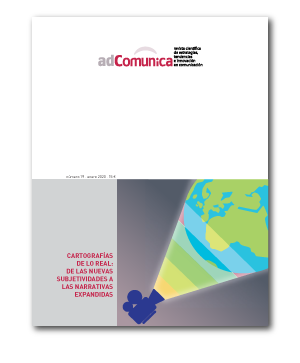Los profesionales de las relaciones públicas como <i>knowmads</i>: una visión desde la academia, los profesionales y estudiantes en Ecuador
##plugins.themes.bootstrap3.article.main##
Resum
El siguiente estudio introspectivo analiza la ideología knowmad vinculada a los profesionales de las relaciones públicas desde la perspectiva de académicos, profesionales y estudiantes de pregrado en relaciones públicas. Se analizan los aportes, tensiones y desafíos que surgen respecto a la ideología y se comparan características del perfil de los knowmads con el perfil profesional del relacionista. Para la recolección de la información se emplearon técnicas cualitativas y cuantitativas: entrevistas dirigidas a académicos ecuatorianos —expertos en relaciones públicas—; grupo de discusión con relacionistas titulados —profesionales—, vinculados a diversos sectores laborales; y finalmente una encuesta a estudiantes recurrentes de la carrera de Relaciones Públicas de la Universidad UTE —Quito, Ecuador—. Se concluye que es fundamental la proyección de los profesionales y estudiantes de relaciones públicas como knowmads, con el fin de rescatar a la profesión en toda su dimensión, haciendo frente a nuevos retos y requerimientos en un entorno cambiante y, sobre todo, competitivo. También se demuestra que varias características de los knowmads encajan directamente con estos comunicadores, validando la importancia de esta ideología para el futuro de la profesión.
Descàrregues
##plugins.themes.bootstrap3.article.details##
1. Política propuesta para Revistas que ofrecen Acceso Abierto
Los autores que publican en esta revista están de acuerdo con los siguientes términos:
- Los autores conservan los derechos de autor y garantizan a la revista el derecho de ser la primera publicación del trabajo al igual que licenciado bajo la licencia CC BY-SA, que permite a otros compartir el trabajo con un reconocimiento de la autoría del trabajo y la publicación inicial en esta revista.
- Los autores pueden establecer por separado acuerdos adicionales para la distribución no exclusiva de la versión de la obra publicada en la revista (por ejemplo, situarlo en un repositorio institucional o publicarlo en un libro), con un reconocimiento de su publicación inicial en esta revista.


